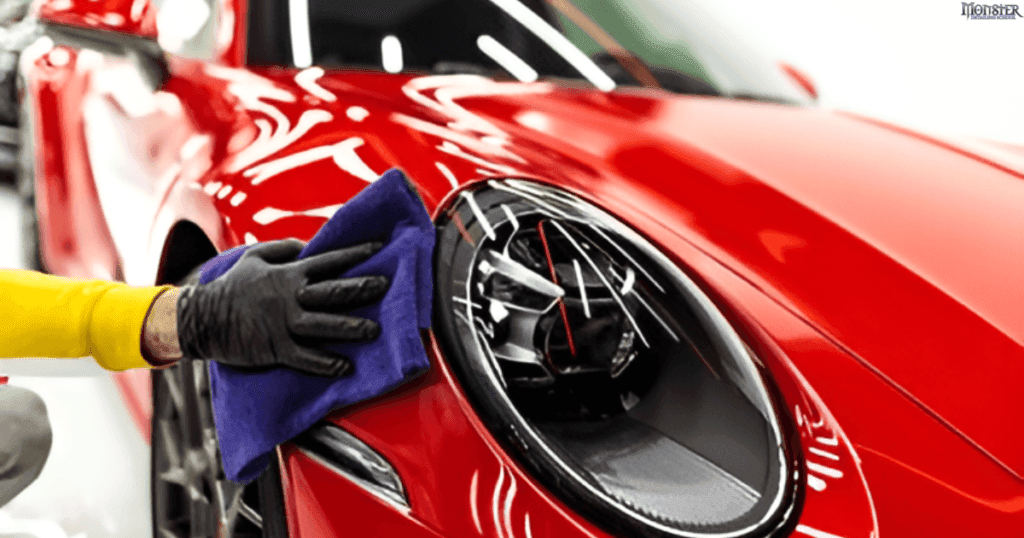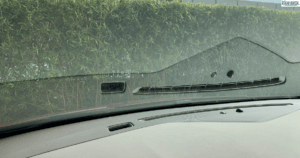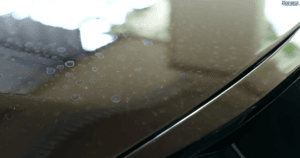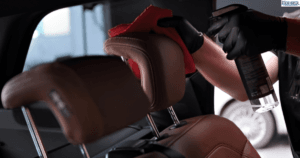At Monster Detailing School, we’re dedicated to providing the best practices and advanced training in car detailing. Our mission is to empower students with the skills and knowledge to become leaders in the industry through comprehensive and multilingual training.
This guide will show you how to polish your car by hand, covering everything from compounding to cutting, while keeping it simple for anyone to do at home. Let’s dive in and get your car looking like it just rolled off the showroom floor!
Why Choose Hand Polishing?
Hand polishing is an ideal option for car enthusiasts who want to take a personal approach to maintaining their vehicle’s appearance. While it does require more effort than machine polishing, it’s perfect for removing minor scratches, swirl marks, and restoring dull paint. It’s also a safer choice for beginners, as it reduces the risk of damaging the paint.
Related Topic: How Long Does It Take to Polish a Car?
Best Way to Polish a Car by Hand
To achieve professional results when polishing by hand, follow these steps:
1. Thoroughly Wash and Dry Your Car
Start by washing your car with a quality car shampoo. Make sure to remove all dirt, grime, and debris to prevent scratches during the polishing process. Dry the car with a microfiber towel.
2. Inspect the Paint
Examine the paintwork to identify areas with scratches, swirl marks, or oxidation. Knowing the condition of the paint will help you determine the appropriate level of polishing needed.
3. Select the Right Polish
Use a medium-cut polish for a balance between removing imperfections and refining the paint. Choose a hand friendly product that can be applied using a foam or microfiber applicator.
4. Apply the Polish with an Applicator Pad
Work in small sections, using a foam or microfiber applicator pad to apply the polish in circular motions. Apply even pressure to ensure consistent results across the entire surface.
5. Buff Off the Residue
After polishing each section, use a clean microfiber cloth to remove any residue. This will help reveal the improved shine and clarity.
6. Apply a Protective Wax or Sealant
Finish off the process with a wax or sealant to protect the polished surface and maintain the shine.
Related Topic: Should You Wax a Car After Polishing?
Can I Polish a Car by Hand?
Absolutely! Hand polishing is not only possible but also effective for minor imperfections and giving your car that extra glow. It’s a great choice for DIY car enthusiasts who prefer a hands-on approach. For more severe paint issues, however, using a machine polisher may deliver quicker and more dramatic results.
How to Compound and Polish a Car by Hand
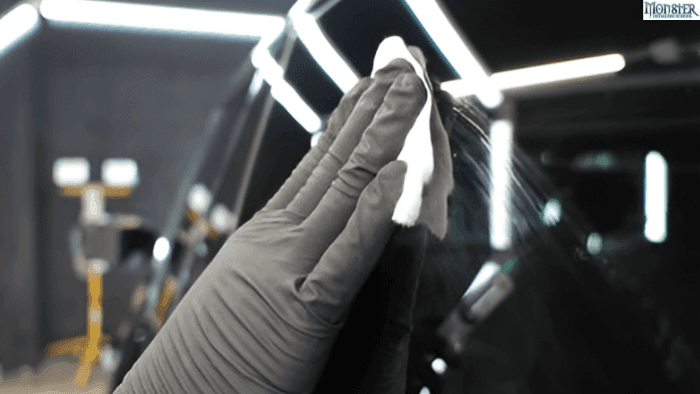
Compounding and polishing go hand-in-hand when it comes to restoring a car’s paintwork. Here’s how to do both effectively:
- Choose a Compound:
Start with a compound if your car has deeper scratches or noticeable oxidation. Compounds are more abrasive than polishes and help remove significant imperfections.
- Work in Small Areas:
Apply the compound using a foam pad and work it into small sections with firm pressure in back-and-forth or circular motions.
- Buff Off the Compound Residue:
Use a microfiber towel to remove any remaining compound and move on to the next area.
- Polish to Refine the Finish:
After compounding, switch to a polish to smooth the surface further and bring out the shine.
Related Topic: Hand vs. Machine Polishing: Which One Reigns Supreme?
How to Cut and Polish a Car by Hand
Cutting is a more intensive form of paint correction that removes a thin layer of clear coat to eliminate defects. Follow these steps for a successful cut and polish:
- Start with a Cutting Compound:
If there are significant swirl marks or dullness, use a cutting compound. Apply it with consistent pressure and circular motions.
- Polish the Paint:
After cutting, refine the finish with a polishing product to smooth the paint and enhance gloss.
- Buff and Protect:
Use a microfiber cloth to remove polish residue, then apply a wax or sealant for lasting protection.
How to Polish a Car by Hand at Home
Polishing at home is a satisfying way to maintain your car’s appearance. Here’s a quick guide:
- Gather Necessary Supplies:
Car shampoo, microfiber towels, polish, foam applicator pads, and wax or sealant.
- Clean the Car Thoroughly:
Wash the car to remove dirt and avoid scratches.
- Polish in Sections:
Work on small sections at a time, applying the polish in circular motions.
- Buff to Shine:
Use a microfiber cloth to reveal the improved paint finish.
- Protect with Wax or Sealant:
Finish with a protective layer to preserve the shine.
Related Topic: Is Ceramic Coating Better Than Waxing?
Why Train with Monster Detailing School?
At Monster Detailing, we don’t just show you how to polish a car by hand—we equip you with the skills and techniques needed to become an expert detailer. Our training covers the latest practices and technology, ensuring our students stand out in the detailing industry.
With multilingual instruction and sustainable methods, you’ll learn to deliver top quality services effectively. Whether it’s hand polishing or advanced detailing, we prepare you to offer exceptional results to your clients.
FAQs
1. Is hand polishing safe for all cars?
Yes, hand polishing is generally safe for all types of cars, including classic vehicles. It’s a gentle method that reduces the risk of damage, especially for beginners.
2. How often should I polish my car?
Polish your car once or twice a year, depending on the paint’s condition. Frequent polishing can thin the clear coat, so it’s best to do it only when needed.
3. Can hand polishing remove deep scratches?
Hand polishing can reduce the appearance of minor scratches and swirl marks. For deeper scratches, a cutting compound or machine polisher may be necessary.
4. Why use wax after polishing?
Wax provides a protective layer, sealing in the shine and helping to repel dirt and contaminants.
Related topic: Orbital vs. Rotary Polisher: Which is Best for Your Car Detailing Needs?
Conclusion
Hand polishing a car is more than just a DIY project; it’s a way to keep your vehicle in pristine condition while enjoying the satisfaction of a job well done. At Monster Detailing School, we’re committed to teaching the best practices and the most advanced techniques, equipping you with the knowledge to achieve stunning results on any vehicle.
Now that you know how to polish a car by hand, why not take your skills to the next level? Join any of our training programs today and become a detailing expert!


